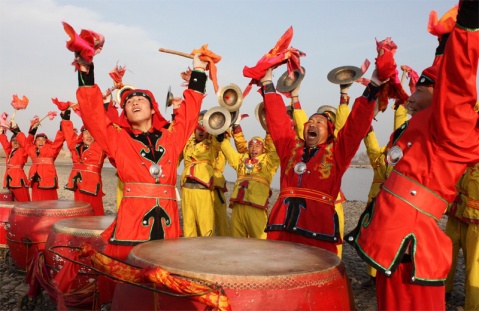
Many Chinese cities have stamped their names on the pages of the nation’s long history by virtue of their rich culture and historic events. In February 1982, in order to protect Chinese cities where important political, cultural and economic events had played out, the Chinese government officially proposed the designation of “historical and cultural cities.”
Those historical and cultural cities, on the one hand, open a window for people to view Chinese history; on the other, they build a brand effect for the cities themselves. How best to preserve those historical and cultural cities and produce optimum results from their brand effect is a subject that demands deep research.
From September 15 to 19, I joined a research group on a trip to Shandong Province, birthplace of Confucius, to visit the many historical and cultural cities there.
Competitive Edge
“History and culture are the soul of a city, as well as the core of a city’s soft power and potential competitiveness. They are the source of a city’s deep value. Abundant historical and cultural resources give a city its distinctive charm and quality, and only with these intact can it be attractive and influential in the long run,” said Li Jianjun, vice director of the publicity department of the CPC’s Shandong Provincial Committee.
According to Wang Shinong, director of the press office of the provincial government, Qufu was included among the first batch of national historical and cultural cities in 1982. Thereafter, Jinan, Qingdao, Liaocheng, Linzi, Zoucheng, Tai’an, and Penglai successively won this epithet. Last year, Yantai and Qingzhou were included, bringing the total number of such cities in Shandong to 10.
“The honor is not only an affirmation of the scientific development of those 10 cities, but also high-level recognition of their cultural consciousness, confidence and self-improvement in urban management. Practices of these cities testify that the protection of historical and cultural heritage will not adversely affect the economic development or social advances of a city, or people’s livelihood, but on the contrary, the distinctive historical and cultural resources will provide strong and sustained impetus to the city’s development,” explained Li.
“Strengthening scientific preservation and rational utilization of historical and cultural sites has a powerful impact on such aspects as transforming regional development models, promoting harmonious development of local societies and economies and comprehensively enhancing the quality of urbanization,” said You Shaoping, deputy director of the Shandong Provincial Bureau of Cultural Heritage. Mr. You also pointed out that cultural heritage resources, as an indispensable pillar for developing the local economy and tertiary industry, play a key role in improving the form of economic operation and boosting socio-economic development.
Revitalize Ancient Culture
Linzi was the capital of the ancient State of Qi (around 1046 – 221 BC) and the birthplace of Qi culture. It served as the capital for over 800 years, from the period when military strategist Jiang Ziya established the State of Qi until it was conquered by the State of Qin, the first centralized empire of China. When I visited Linzi, I saw that most of the city’s ancient architecture was lost; what remains today are just place names. But the local government is taking great steps to fix this problem.
The renowned ancient Chinese historical work Zhan Guo Ce (Strategies of the Warring States) records that the State of Qi extended some 1,000 kilometers. Linzi was a rich city and its residents enjoyed many entertainment activities, such as playing a variety of musical instruments, cock fighting, and Cuju, an archetype of modern football.
Since the 1970s, experts in international sports history have repeatedly pointed out that Cuju, which first appeared over 2,300 years ago in ancient China and was a popular sport in Linzi, is the origin of modern football. On July 15, 2004 at the opening ceremony of the Third International Football Expo in Beijing, FIFA president Sepp Blatter formally announced the origin of soccer – Linzi, Shandong Province.
In 2006, Cuju was included on the first list of China’s national intangible cultural heritage. In order to better pass on the cultural legacy, Linzi launched Cuju classes in all its middle and elementary schools to revive the ancient sport. Moreover, Linzi has taken advantage of its status as the birthplace of “The Beautiful Game” in its city planning and construction by building relevant sculptures and symbolic constructions around the city, trying to elevate the city’s image among local people and tourists.
During the 10th China (Linzi) Qi Culture Festival this year, the organizers invested much time and effort in promoting Cuju, digging deep to get to the essence of Qi culture. “Efforts should be made to expand the Qi culture industrial chain and give full play to the cultural influence of Cuju to build the Qi culture brand and to introduce Linzi to the world,” said Ma Guoqing, an expert in Qi culture and curator of Shandong Linzi Qi Culture Museum.
We Recommend:
